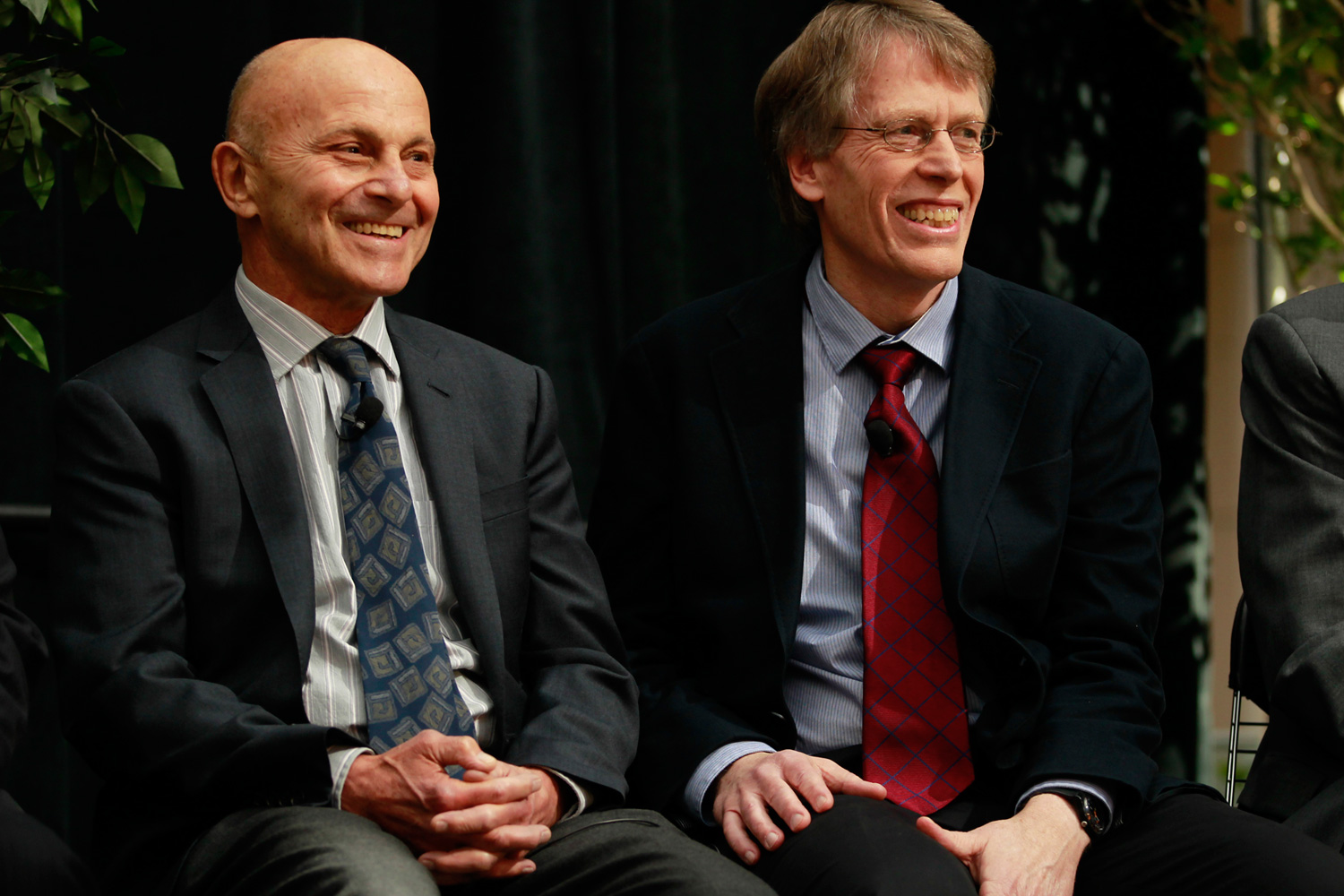Yesterday three economists, two from the University of Chicago, won the Nobel Prize in Economics. Two of them are pretty famous, as these things go. The University of Chicago's Robert Eugene Fama is considered by Paul Krugman, Fama's bete noir, to be "arguably our most famous and influential finance economist." For what it's worth, Krugman, despite their enmity, thinks Fama is deserving:
Fama’s work on efficient markets was essential in setting up the benchmark against which alternatives had to be tested; Shiller did more than anyone else to codify the ways the efficient market hypothesis fails in practice. If Fama has said some foolish things in recent years, no matter — he did earn this honor, as did Shiller.
Yale's Robert Shiller is probably more famous than Fama; he's written popular books and is the Shiller of the frequently cited Case/Shiller Home Price Index. And in 2005 he said this:
"This is the biggest boom we've ever had," said Mr. Shiller, who bought into the boom himself in 2002, with a vacation home near one of Connecticut's Thimble Islands. "So a very plausible scenario is that home-price increases continue for a couple more years, and then we might have a recession and they continue down into negative territory and languish for a decade.
"It doesn't even attract that much attention," he continued. "There will be many people thinking it was a soft landing even though prices may have gone down in real terms by 40 percent."
And that's basically what happened. (Shiller is married to a psychologist, which explains to a certain extent his belief that markets are people and people are irrational.) The award recognizes two very influential economists whose ideas are in opposition—quite literally, if you ask Fama—a confusing award for a confusing time.
Then there's the University of Chicago's Lars Peter Hansen, of whom fellow Nobel laureate Krugman writes: "As for Hansen, his work involves econometric methods on which I have no expertise at all, but I’ll trust the experts who consider it great work."
Oh, ok. Let's ask Tyler Cowen, then: "For years now journalists have asked me if Hansen might win, and if so, how they might explain his work to the general reading public. Good luck with that one."
Hmm. John Cassidy? "Hansen’s mathematical contributions are above my pay grade."
So everyone kind of punted on poor Lars Peter Hansen. Fortunately, one of the great things about the Internet is that people are there to help, and having spent a couple hours puzzling over Hansen, I can at least point you toward them.
First, Tyler Cowen: "This is a prize given to time series econometrics and how to deal with imperfect data and changing variances for variables being estimated." Cowen is circumspect about trying to expain that to a general audience, but it at least puts you in the ballpark: how to deal with imperfect data.
Then, Alex Tabarrok: "What Hansen did with the generalized method of moments is show that when we have more moment conditions than parameters we can best estimate those parameters by giving more weight to the conditions that we have better information about."
But still kind of confusing. "More moment conditions than parameters?" You get the gist, though, and it's actually very intuitive: if you know a lot about something, and not as much about something else, you can put that knowlege together and draw conclusions from it, as long as you're careful about what you do and don't know. That's where Jeff Leek's very reader-friendly explanation comes in. Basically, Hansen developed a rigorous framework for deriving conclusions from what you do and don't know:
Hansen showed that in this case you can take the equations and multiply them by a set of weights. You put more weight on equations you are more sure about, then add them up. If you choose the weights well, you avoid the problem of having too many equations for two few variables. This is the thing he won the prize for – the generalized method of moments.
This is all a big deal because the variables that economists measure frequently aren't very pretty. One common way they aren't pretty is that they are often measured over time, with complex relationships between values at different time points. That means it is hard to come up with realistic assumptions about what the data may look like.
And that's where Hansen's work comes back around to the famous economists, as Cowen writes: "you will see that Hansen’s work is instrumental for testing the advanced versions of the propositions of Fama and Shiller…. Here’s the most concrete sentence you are going to squeeze out of me on this one: if you want to do serious analysis of whether changing risk premia can help rationalize observed asset price movements, Hansen’s contributions will prove essential." Hansen's powerful toolkit connects the two—appropriate for a Nobel that's appropriately themed around being very very careful about what we think we know about markets.




